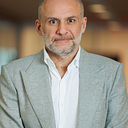Health Crisis Communications In the Aftermath of the Pandemic
The pandemic managed to expose a great need for crisis communications in the health industry. Many people have noticed that members of the public are looking for real-time answers, which isn’t always easy for healthcare professionals to provide.
This is because it’s not always simple for researchers and health professionals — people that have all the information that the public needs to hear — to effectively communicate that information.
The pandemic was a time that this need for health crisis communications drastically increased, because of the various challenges that public health officials faced in terms of navigating public health messaging.
This is especially true with various misinformation campaigns that ended up spreading online, which demonstrates a need for better-prepared health and risk communication experts.
This need for effective communication from public health officials has many examples from the past year. One of them is from Dr. Gail Newel, who had protesters break through into her private neighborhood for numerous weeks throughout the last year.
She also received a number of calls, emails, and letters with criticisms and even threats. This is because Newel ended up being in the spotlight during the pandemic, sharing information with the public that was subject to criticism from both the public and politicians.
Aside from her example, plenty of public health officials had to drastically change their daily lives for more reasons than just the global pandemic.
After sharing their professional opinions and information publicly, a number of public health officials had to incorporate surveillance cameras, security patrols, and more into their daily routines because they no longer felt safe in public.
These are the same health officials who issued the first stay-at-home orders in March last year, as well as orders for businesses to close, and those banning social gatherings and travel.
All of these efforts, along with many others, were for the public good, such as setting up testing sites, coordinating with state and government officials on the response to the pandemic, organizing operations for tracking data, and overseeing contact tracing.
Furthermore, aside from all of these positive efforts from health officials, many of them decided to resign from their positions because of the responses from the public.
For state and government officials to be able to combat this type of behavior, they will need to work with public relations experts specializing in the health industry.
They should also provide health care officials with protection from these types of harassment.
The necessary protection includes things like investigating all potential and credible threats, providing security details when warranted, and prosecuting those who harass any public health officials.
Finally, there is a large need, as previously mentioned, for transparent and factual communication with the public that’s also efficient.
This type of communication can help public health officials appear closer with the members of the public, and allow them to share the reasoning behind some of the difficult decisions that many health officials had to make last year.
